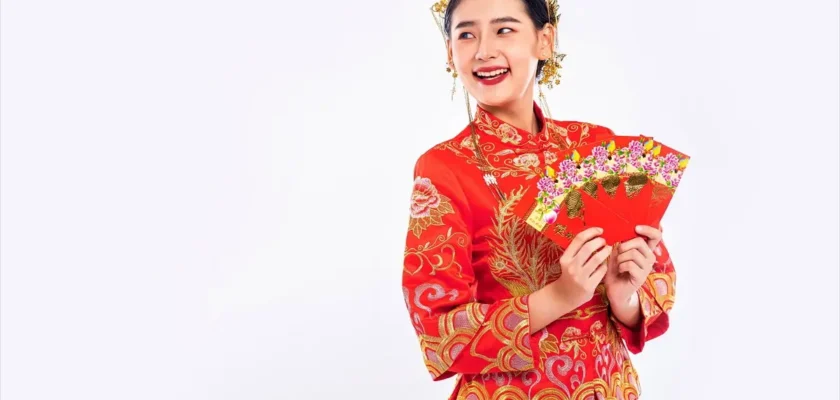No matter whether you are designing a Chinese dress or any other dress, fabric plays a crucial role in it. It contributes to the overall aesthetics, comfort, and cultural significance. If you choose the right quality of fabric then that will impact the feel, look, and functionality of a Chinese Dress.
The significance of the fabric in Chinese dresses, also known as qipaos or cheongsams, is deeply rooted in cultural, historical, and symbolic contexts.
The choice of fabric plays a crucial role in defining the dress’s aesthetics, cultural identity, and the wearer’s status. Now in order to get the best fabric dress, it would be ideal to consider robe chinoise platform right now.
If you want to get a garment in which you look stunning then you need to look for the right kind of fabric only. Once you do so, it will give you an aesthetic look!
Reasons Why Fabric Matter in Robe Chinoise
Aesthetics and Visual Appeal
The fabric chosen plays a key role in attaining the grace and beauty that are hallmarks of Chinese clothing. In Chinese costum
es, opulent materials like silk, brocade, satin, and velvet are frequently utilized. These materials have a natural sheen and drape that improve the dress’s aesthetic attractiveness and give it a more upscale and refined appearance.
Cultural Significance
Chinese clothing frequently incorporates cultural connotations and significance into its fabric selections. For instance, silk is revered in Chinese culture as a representation of elegance, prosperity, and distinction.
A Chinese dress’s use of silk fabric enhances both its visual appeal and the cultural traditions and heritage connected to the garment.
Comfort and Wearability
A Chinese dress’s comfort and wearability are influenced by the fabric used to make it. Chinese dresses are frequently cut and form-fitting, so the fabric should have just the perfect amount of elasticity and breathability to promote comfort.
Natural materials with breathable qualities, like silk and cotton, are the best options for Chinese dresses, particularly in hotter climes.
Draping and Silhouette
The silhouette and general appearance of a Chinese garment can be considerably influenced by the draping properties of various textiles. For instance, silk has a lovely, fluid drape that accentuates the dress’ feminine contours.
Certain design components, such as sleeves or collars, can gain structure and volume by using stronger textiles, like brocade or jacquard.
Embroidery and Embellishments
Chinese clothing frequently has exquisite beadwork, embroidery, or other embellishments. The execution and appearance of these decorative components might be impacted by the fabric selection.
Smooth, even fabrics, like silk or satin, make a good foundation for delicate embroidery work and guarantee that the details stand out.
Durability and Longevity
The durability and longevity of the fabric used to make a Chinese dress might affect how long it lasts. Since high-quality fabrics are less likely to rip or tear, the dress will continue to look lovely and stay in good condition over time.
While buying dresses one should consider robe chinoise Traditionnelle because it is one of the best online sites to get the best clothes. Purchasing dresses made of sturdy materials can enable frequent wearing and delight.
Symbolic Meaning
The significance of symbolism in Chinese culture extends to the fabric used for clothing. Every cloth has distinct meanings, and the choice is frequently impacted by the situation and the wearer’s job.
For instance, red silk is a common choice for weddings and festive occasions since it represents joy, good fortune, and happiness.
Reflecting Occasion
Different textiles are needed for various circumstances. Dresses made of silk or brocade may be required for traditional rites and ceremonial occasions, whereas cotton or other natural fibers may be used in casual or everyday clothing. The choice of fabric aids in expressing the right amount of formality and respect for the occasion.
Status and Social Class
In the past, the cloth used to make Chinese dresses represented status. Silk was a pricey cloth that was frequently saved for aristocratic and royal women as a symbol of riches and success.
People of lesser socioeconomic rank had easier access to cotton and other natural fibers, which reflected this. The choice of fabric can still indicate wealth and taste in today’s society.
Craftmanship and Artistry
The elaborate techniques used to create traditional Chinese fabrics like silk, brocade, and jacquard demand expert expertise.
Supporting their use contributes to the preservation of this craftsmanship and legacy because making these fabrics requires a profound understanding of traditional techniques.
Fusion of Modern and Traditional
To produce distinctive and avant-garde Chinese costumes, designers frequently experiment with fusing traditional and modern textiles. This synthesis preserves the core of classic elements while allowing for imaginative interpretations.
Adapting to Climate
Different climate zones exist in China, ranging from hot and humid to cold and dry. Chinese garments are made of various fabrics to accommodate various weather conditions.
While heavier materials like velvet or wool may be utilized in colder climates, lighter fabrics like silk and lightweight brocades are preferred in warmer climates.
Conclusion
For a variety of reasons, the fabric is important in Chinese clothing. The selection of fabric in these costumes is a crucial component of Chinese fashion and identity, serving to preserve cultural heritage as well as express symbolism, occasion, and social standing.
Chinese gowns are timeless and relevant representations of the nation’s rich history and culture as China continues to change thanks to the appreciation for traditional textiles and new adaptations.

